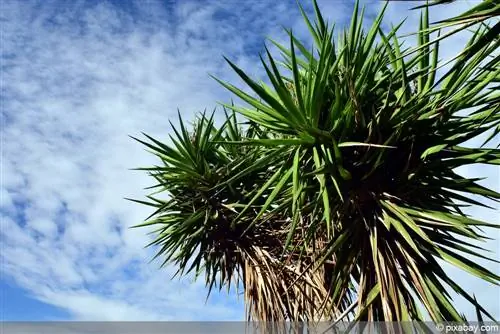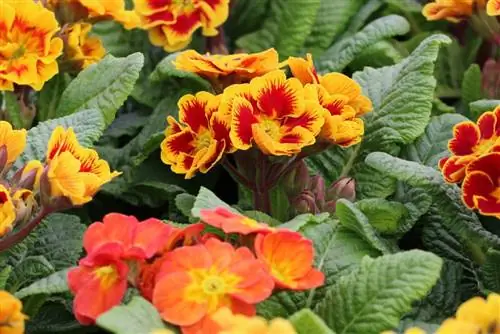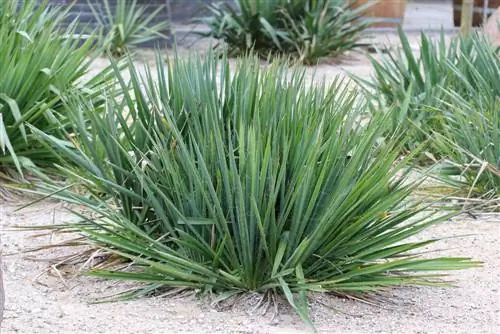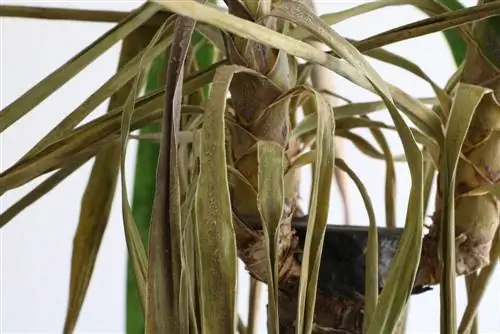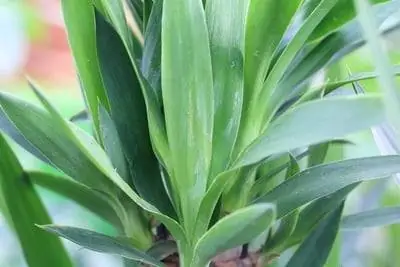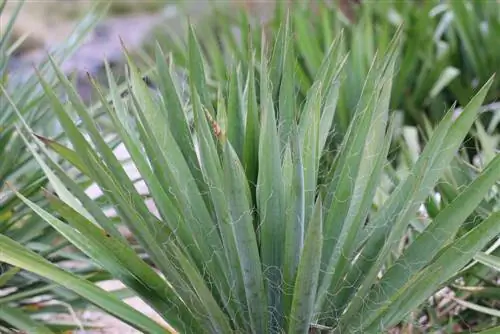- Author admin [email protected].
- Public 2023-12-17 03:39.
- Last modified 2025-06-01 06:48.
The Yucca elephantipes, the Latin name for the yucca palm, has been an integral part of German living rooms for many years. No wonder: it not only looks impressive, but is also extremely easy to care for. If you bring a yucca into your home, you don't have to worry about it much. You certainly don't need the famous green thumb. You can even easily put them outside in the garden every summer - provided you pay attention to a few points.
Only go into the garden from 20 degrees onwards
The Yucca palm originally comes from the semi-desert areas of Central America. She therefore loves it warm. Cold or even icy temperatures are definitely not her thing. On the contrary: Even temperatures around or just above freezing point can kill the plant. You should always keep this need for warmth in mind when it comes to putting them outside. This is generally not a problem during the summer months. This even has a positive effect on the growth of the yucca. However, you should be sure that a temperature of at least 20 degrees Celsius is reached during the day. In our part of the world you are usually only on the safe side from June onwards. Basically, the months of June, July and August are suitable for placing the Yucca elephantipes outdoors.
The months of May and September, on the other hand, are always associated with a certain risk - the temperatures can drop significantly in these months. But even in midsummer you should always make sure that it doesn't get too cool. If in doubt, the plant must be brought indoors. It is also very important that it remains in its plant pot. Planting them in the ground in the garden doesn't work. As easy as the yucca is to care for in general, it is particularly sensitive.
Protected locations only
Of course, you can't just position your yucca outdoors anywhere. Rather, the location must meet a few basic conditions if you do not want to experience any unpleasant surprises. The plant’s elementary needs play a central role - and they apply both indoors and outdoors. Yucca elephantipes likes it warm, bright and protected from wind. A draughty location is therefore prohibited, as is a shady one. On the other hand, excessive sunlight takes some getting used to for the yucca. It can cause a kind of sunburn, which manifests itself as unsightly brown spots on the leaves. In general, the plant first has to get used to being in direct sun.
Tip:
In order to get the yucca palm used to a location directly in the sun, it is recommended to place it in phases in a window on the sunny side while still in the apartment. Even outdoors, the location should be adjusted step by step, for example by first placing it on the terrace or balcony.
It has to be dry
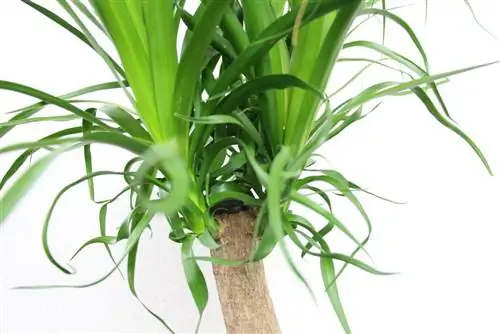
Because of its origin alone, the yucca prefers a rather dry climate. If it is outdoors, it must be protected from moisture and especially from rain. If the summer turns out to be wet and cold, the plant belongs back in the apartment immediately. It also cannot tolerate too much wind or drafts. On the one hand, this means that the Yucca elephantipes becomes too cold, and on the other hand, damage can be caused by storms. In short: the right location plays an enormous role. Here are the most important points to consider.
- Only place outside in the summer months when temperatures are around 20 degrees
- Dry location protected from rain and wind
- Avoid drafts
- Direct sunlight is possible, but the plant must be gradually accustomed to it
- Always leave the yucca in its planter in the garden
Watering and fertilizing outdoors
Even if the yucca palm is in the garden, it needs to be watered and fertilized regularly. Above all, it needs significantly more water than is the case in the apartment. Under no circumstances should you save on water. At the same time, you should make sure that no waterlogging occurs. Wet feet are death to a yucca. In addition, the plant also needs to be supplied with nutrients regularly. It is best to use a commercially available liquid fertilizer. A rhythm of two weeks has proven to be effective.
Hardy Yuccas
The Yucca elephantipes is not hardy and therefore cannot be left outdoors permanently. However, there are winter-hardy Yucca species that can be cultivated outside in the garden. These include, for example, the Yucca gloriosa, the Yucca baccata or the Yucca filamentosa. They can survive even a relatively harsh winter and consistently icy temperatures. If in doubt, they can be protected with a garden fleece or other cover - for example when there is a lot of snow falling. If individual leaves dry up during the winter months, there is no reason to panic. The plant sprouts reliably in spring.
Why go outside at all?
Of course, you can leave the yucca palm in your home all year round without any problems. So why put them outside at all? Answer: The fresh air and the sun are extremely good for the plant and promote its growth. If you carefully consider the points listed here, a trip into the countryside will be a real fountain of youth for Yucca elephantipes, for which it will thank you with lush splendor.

